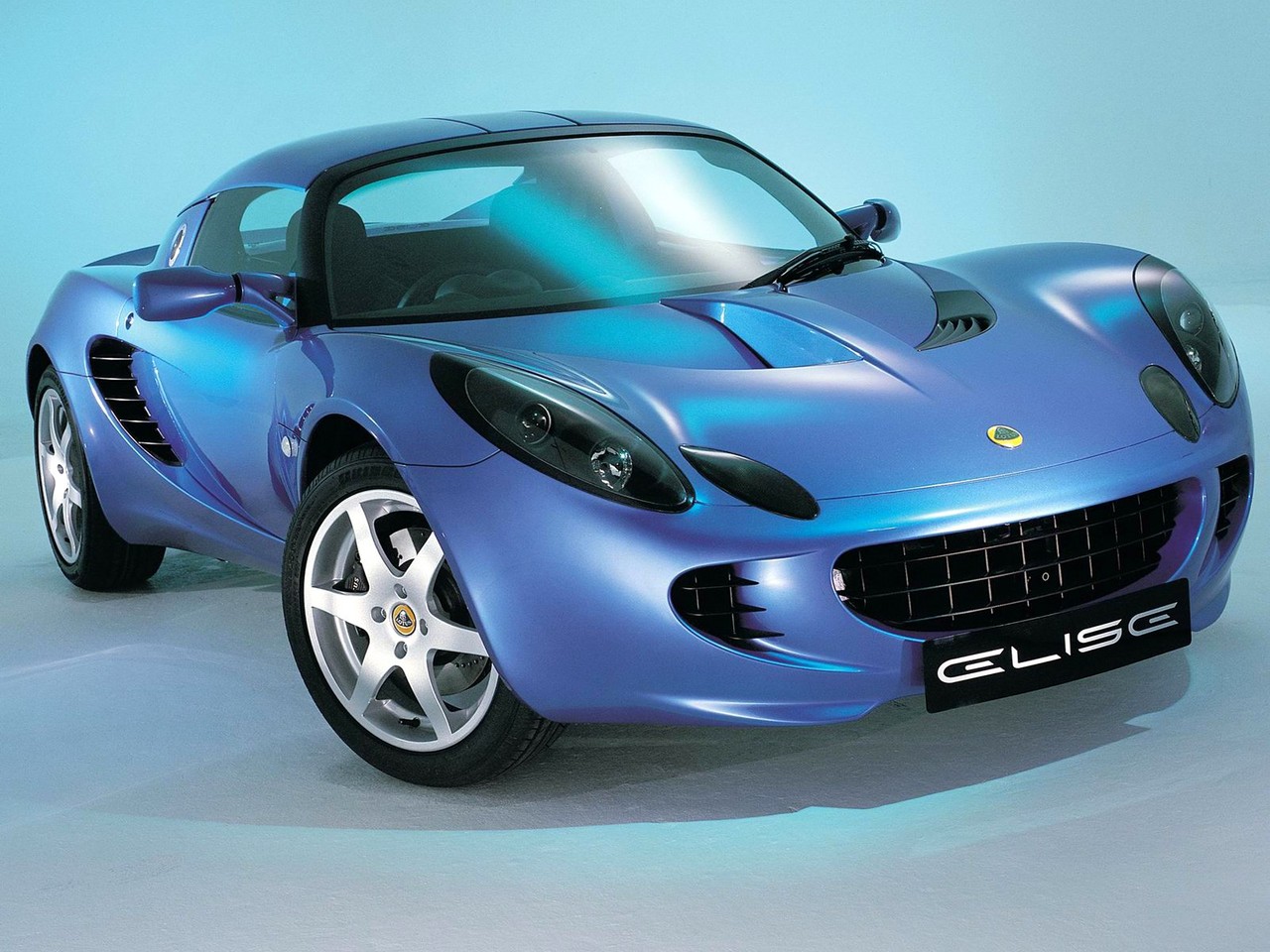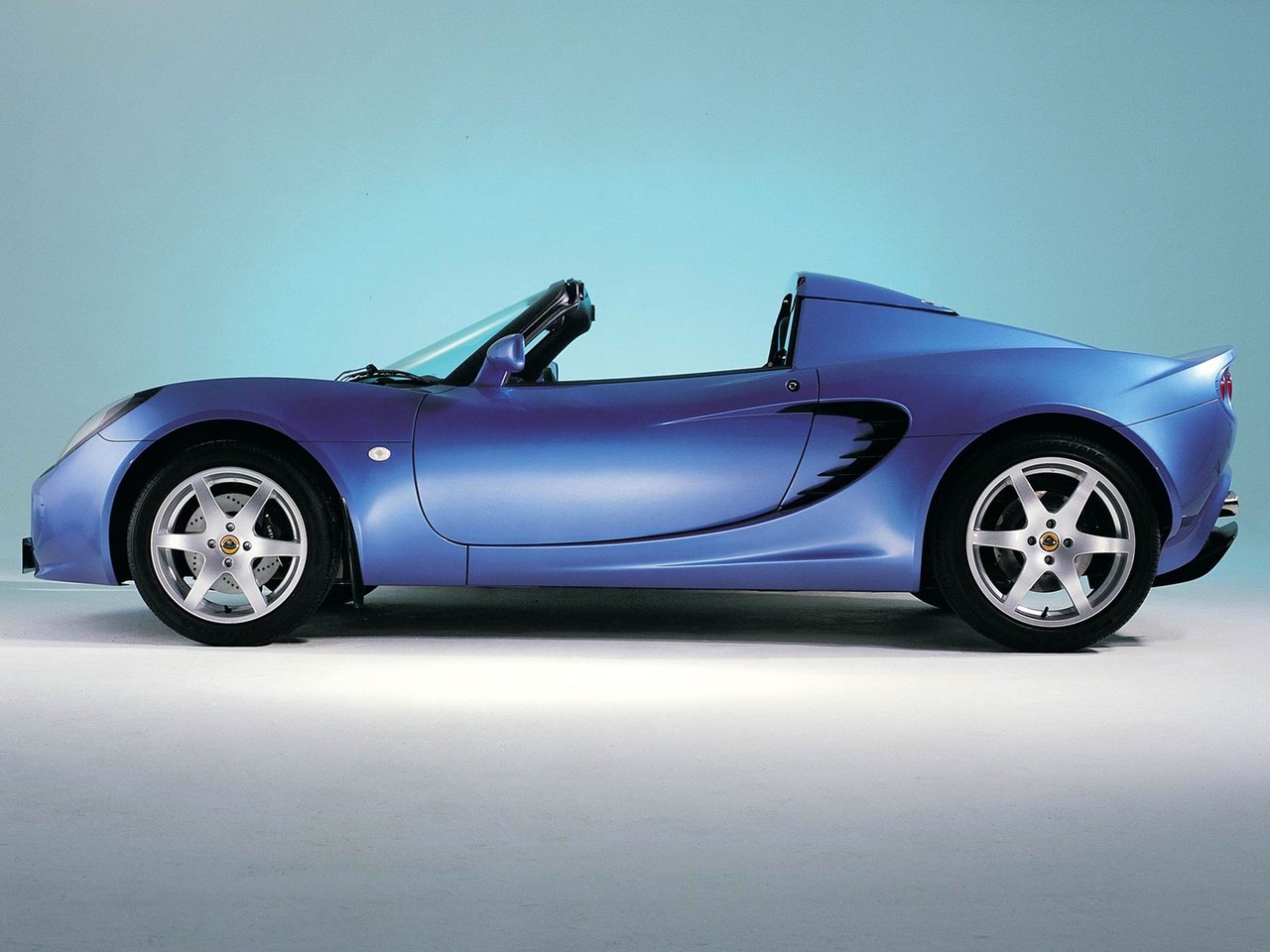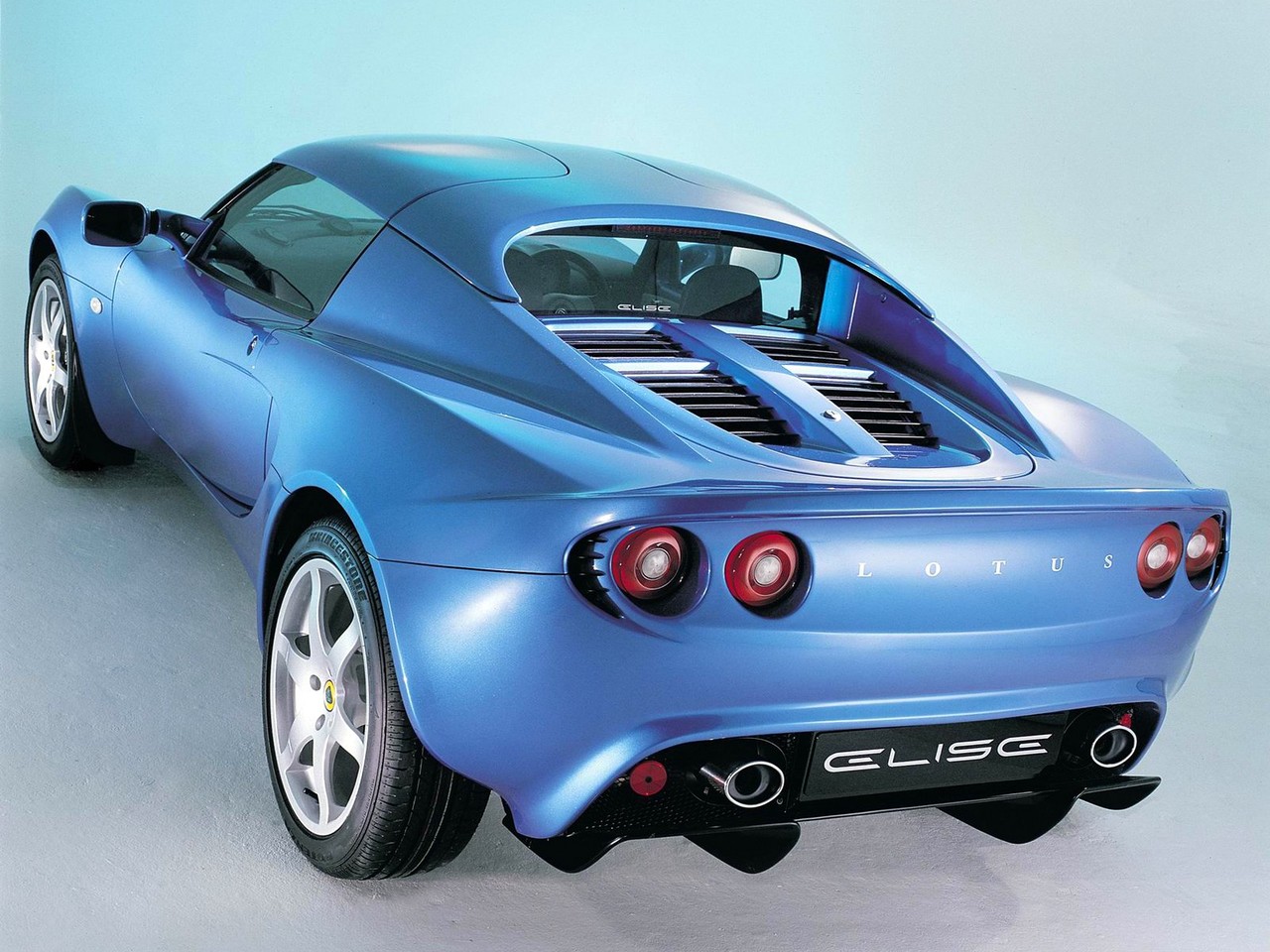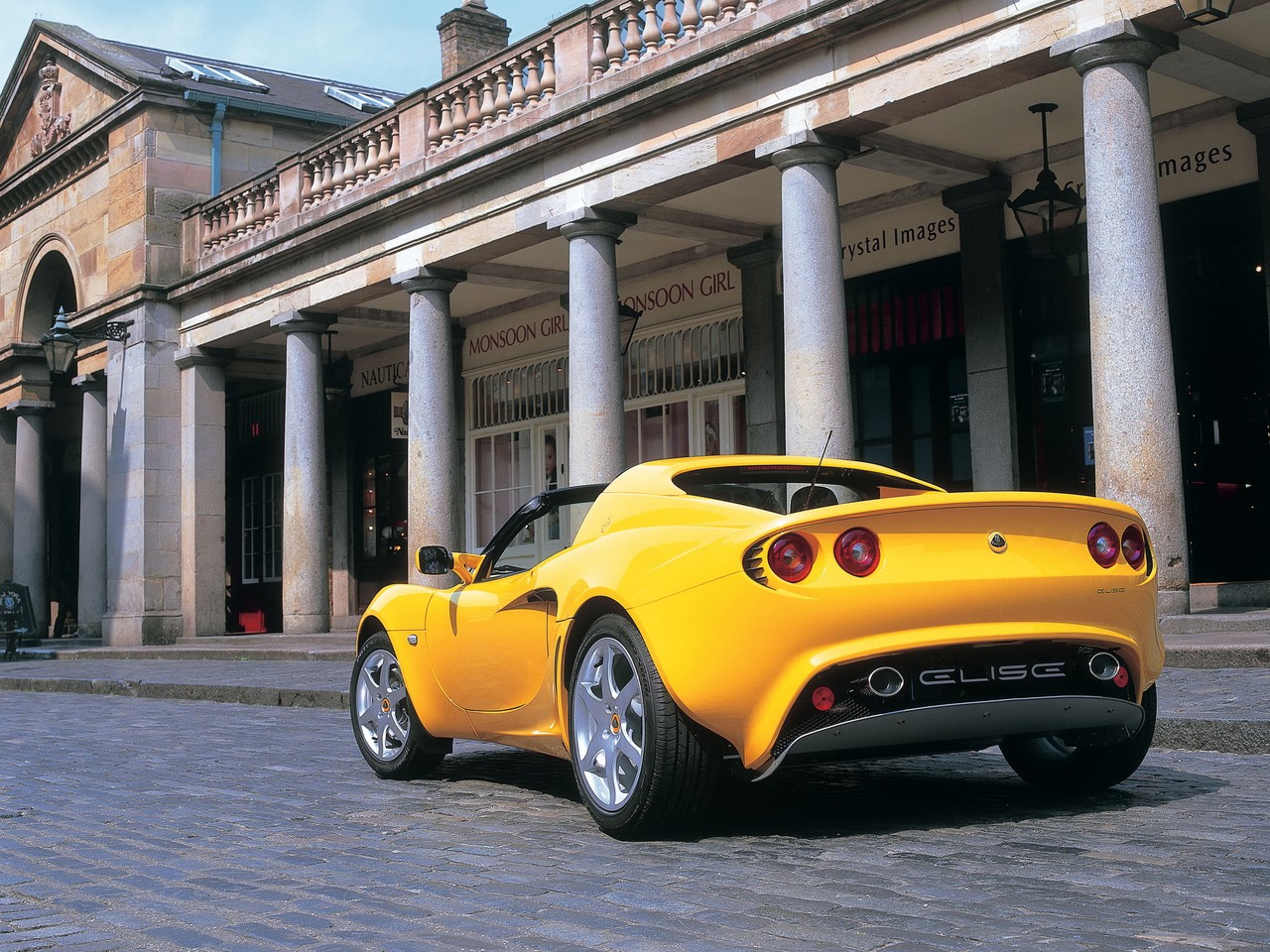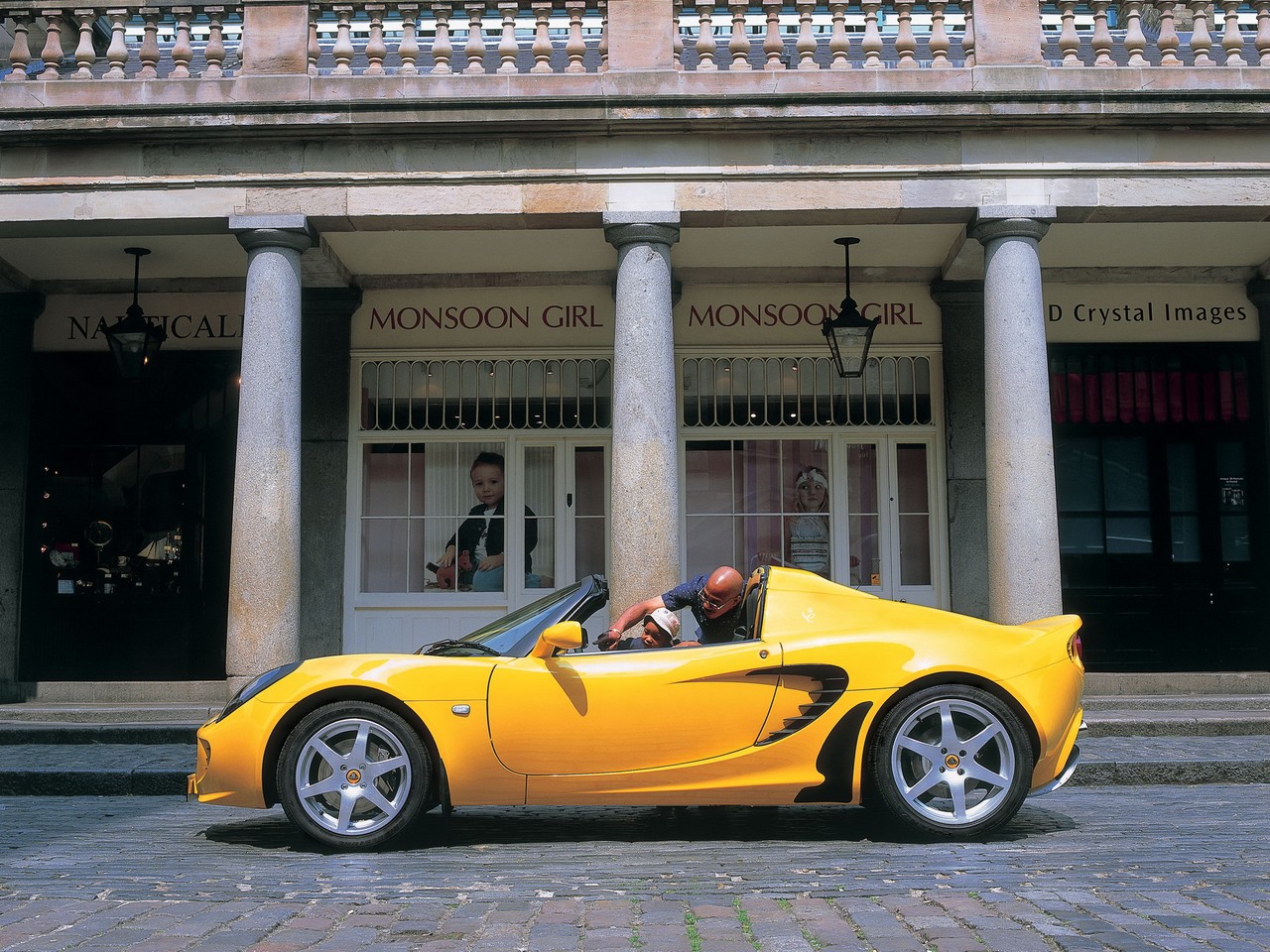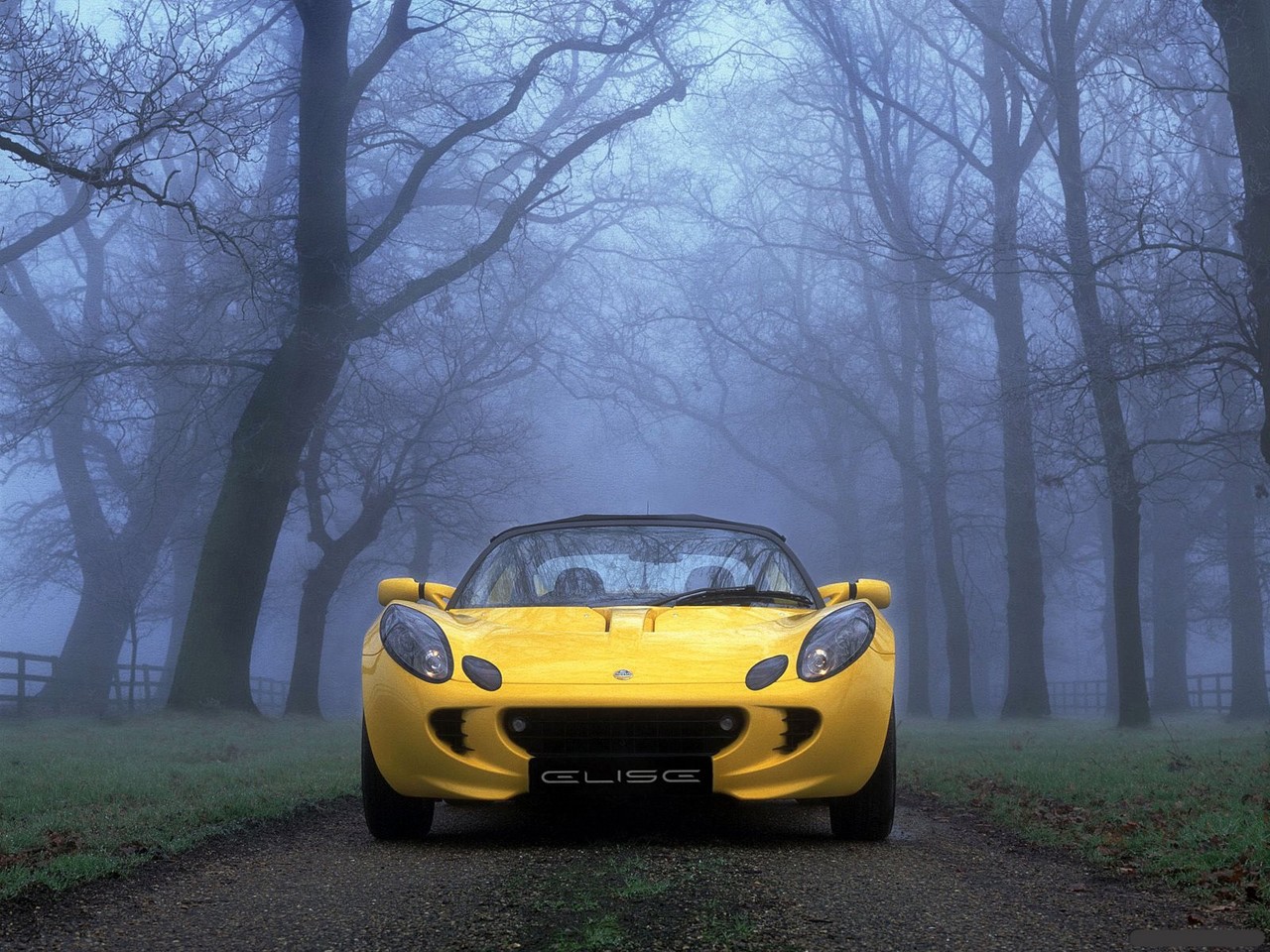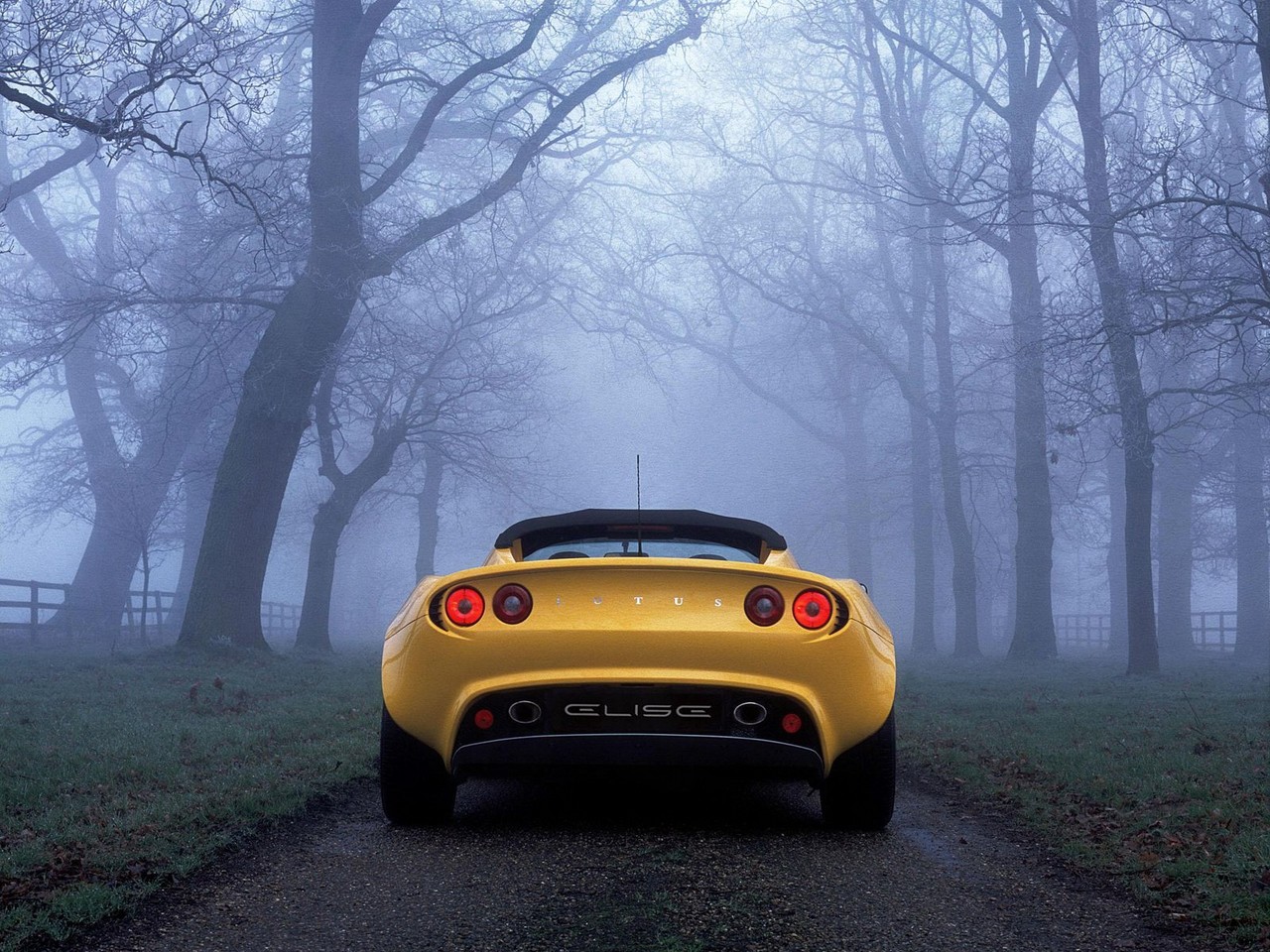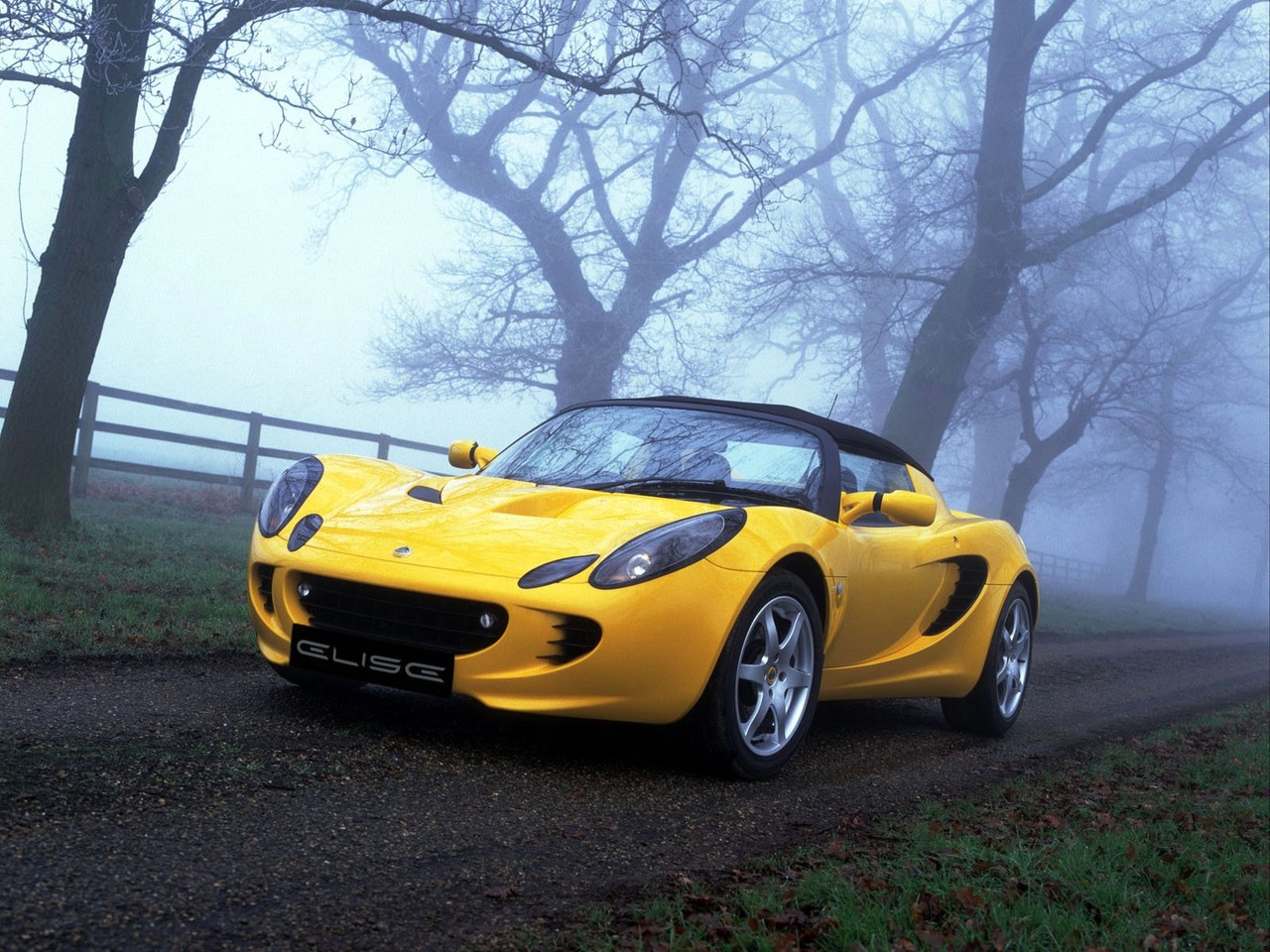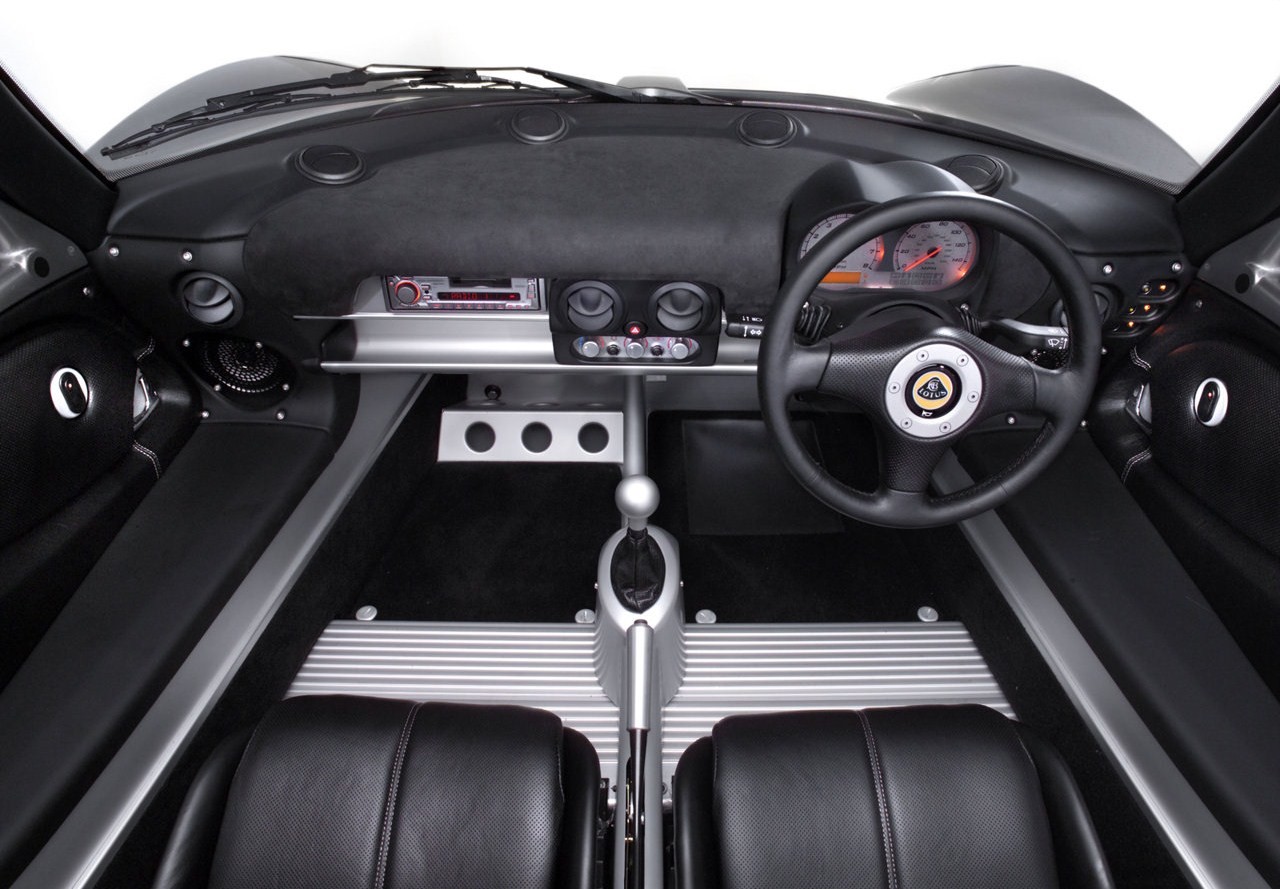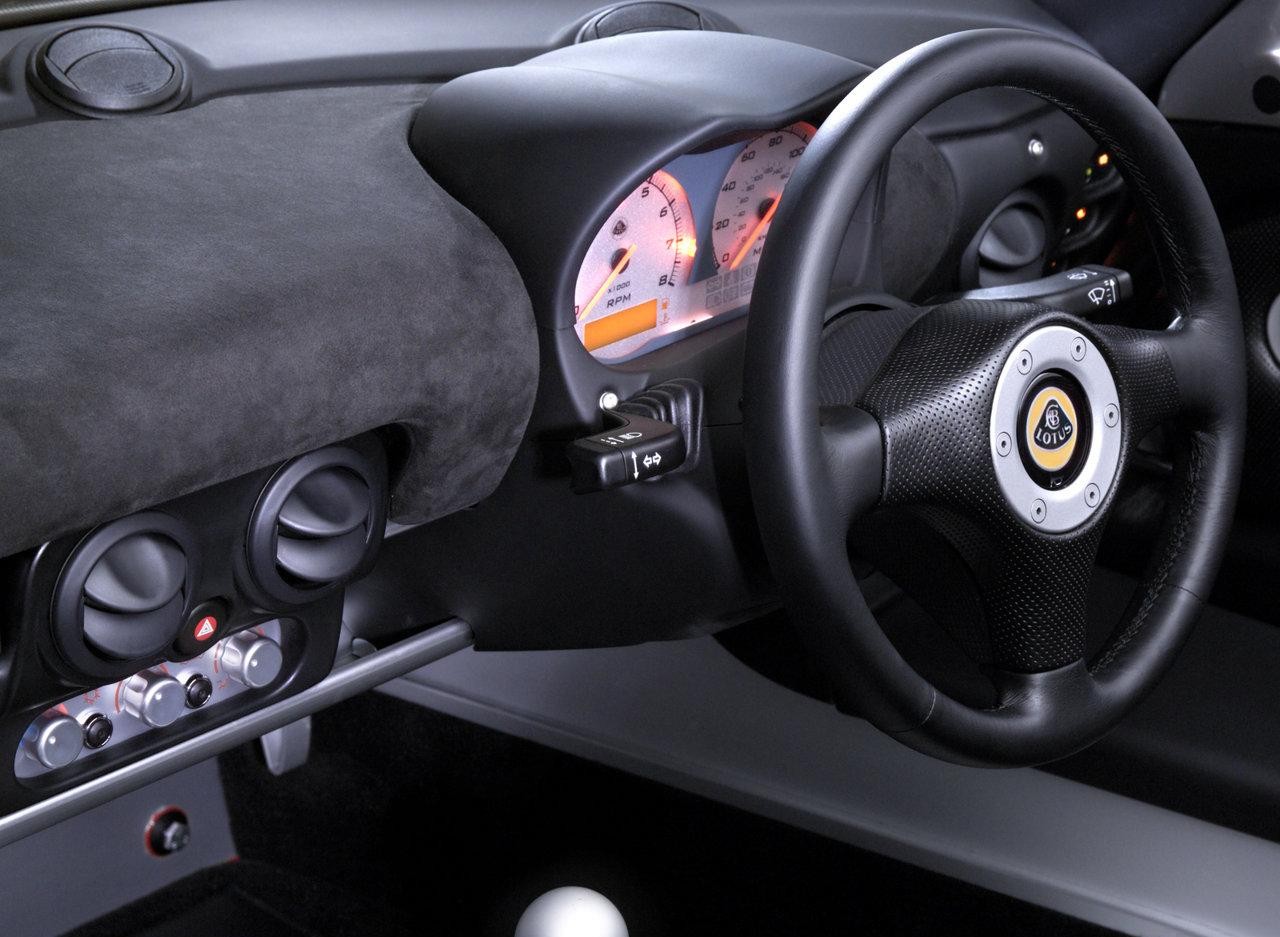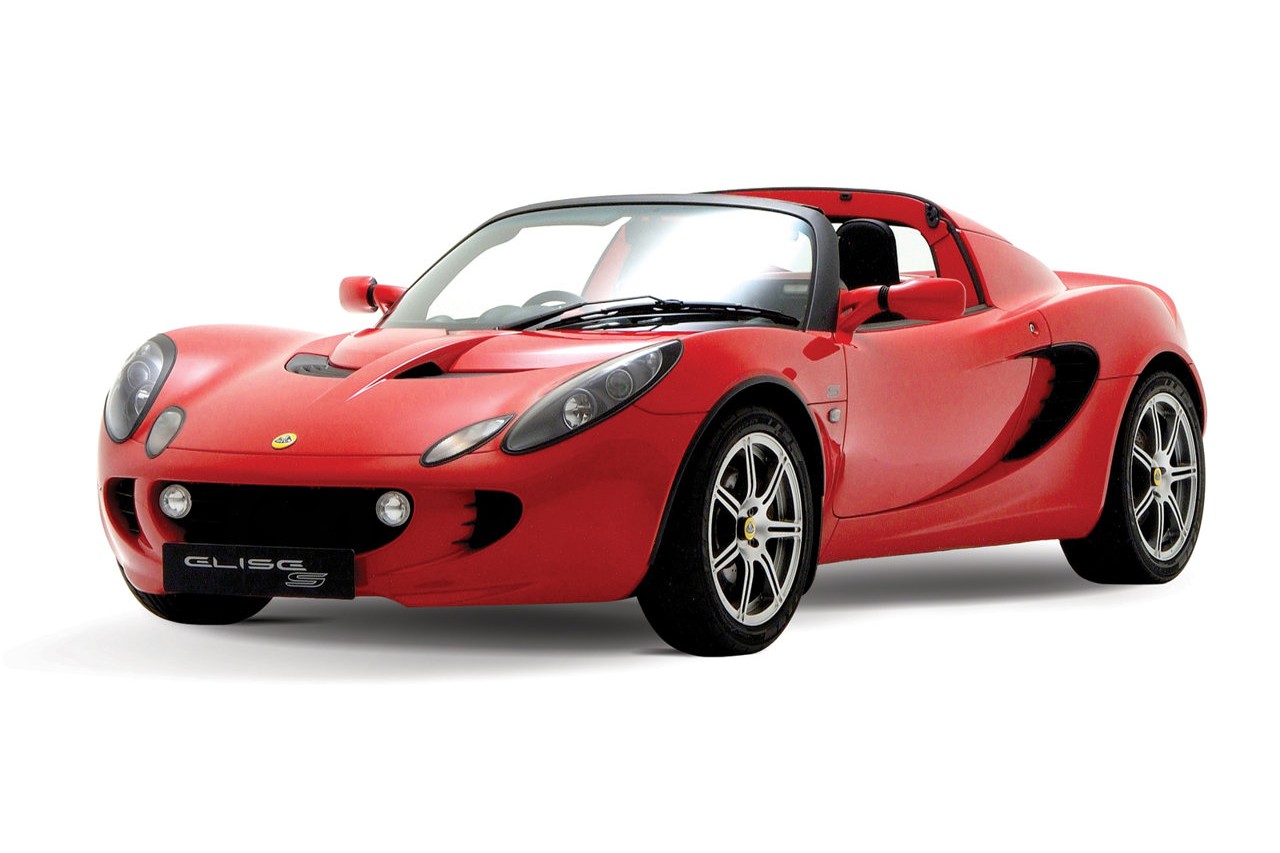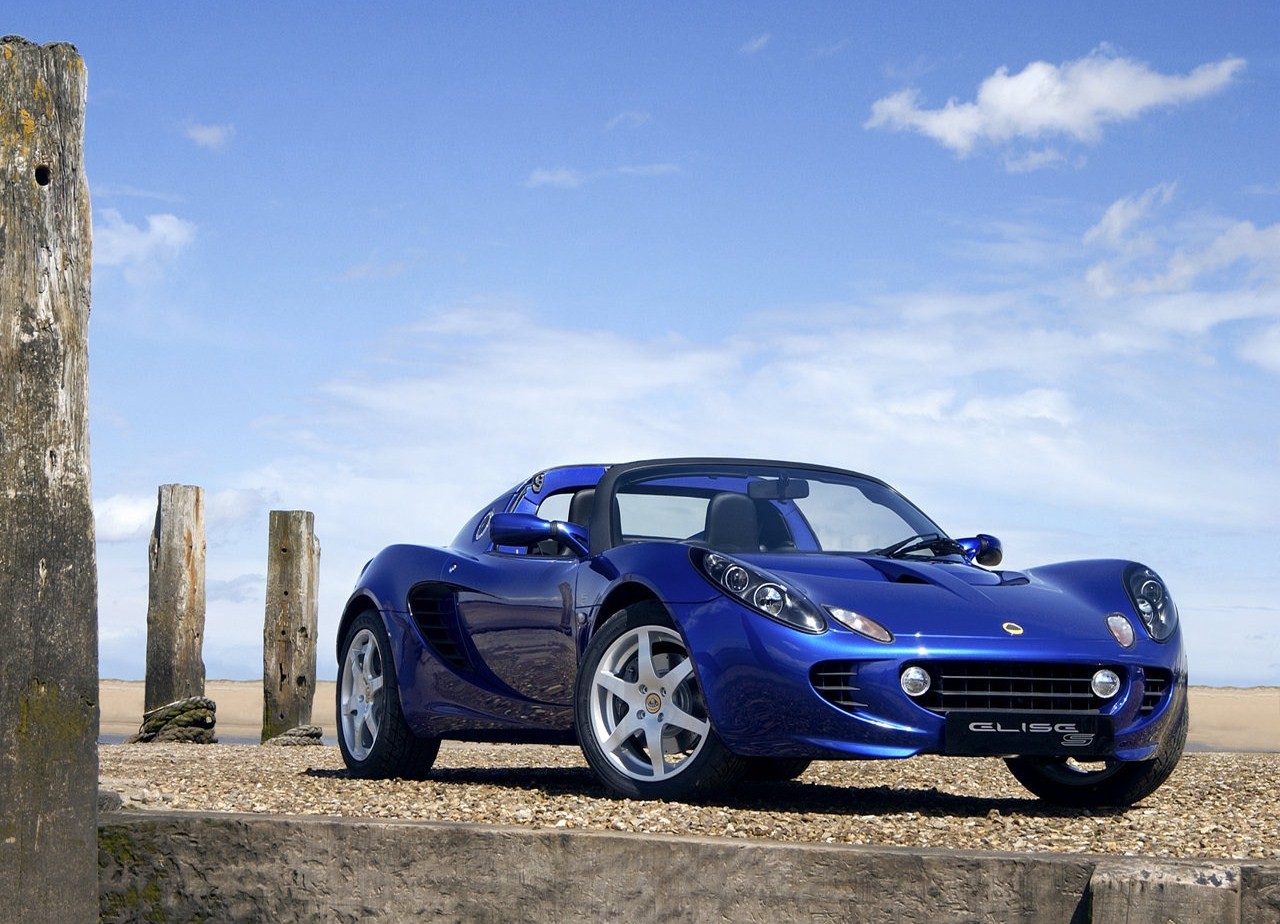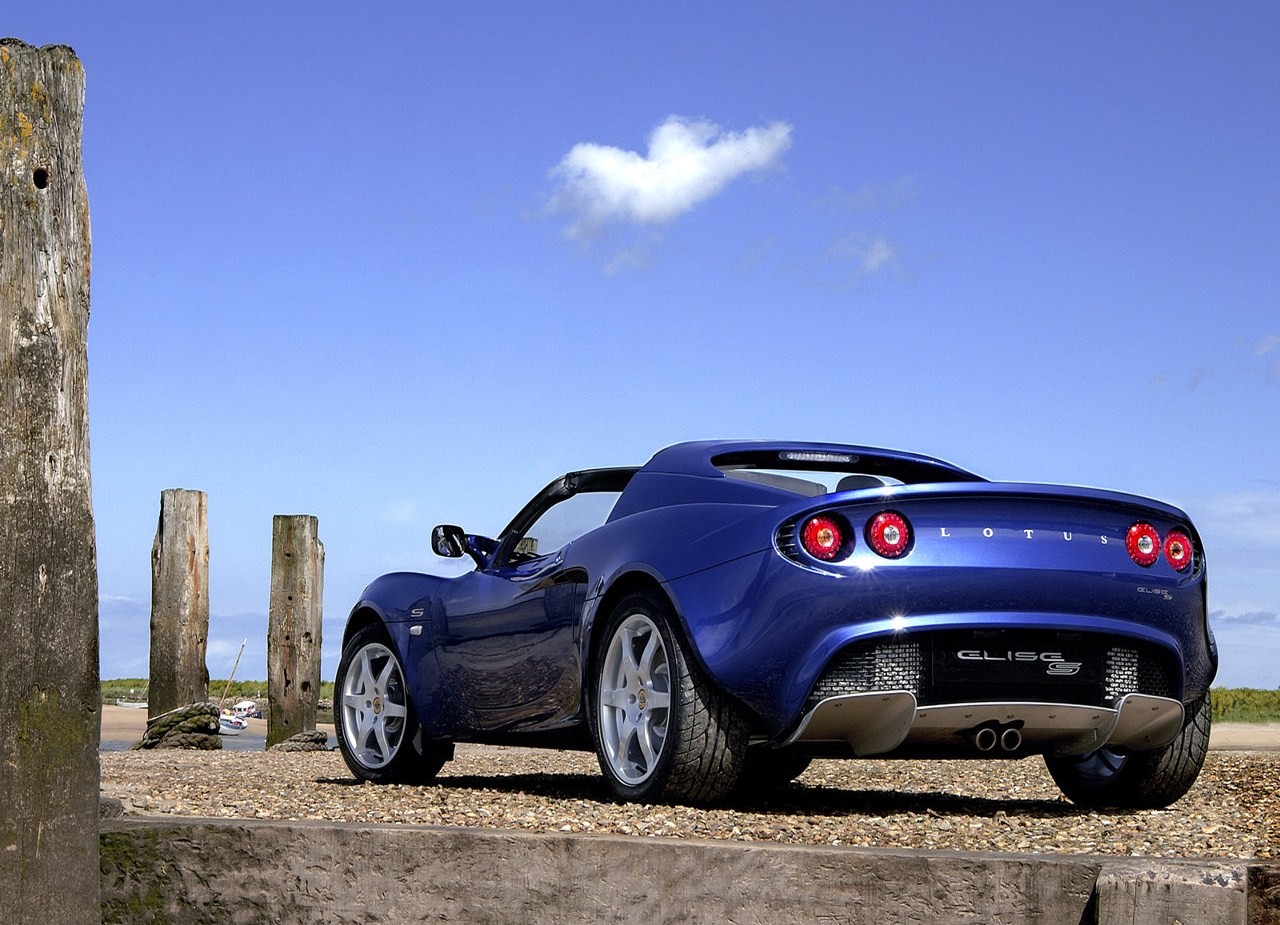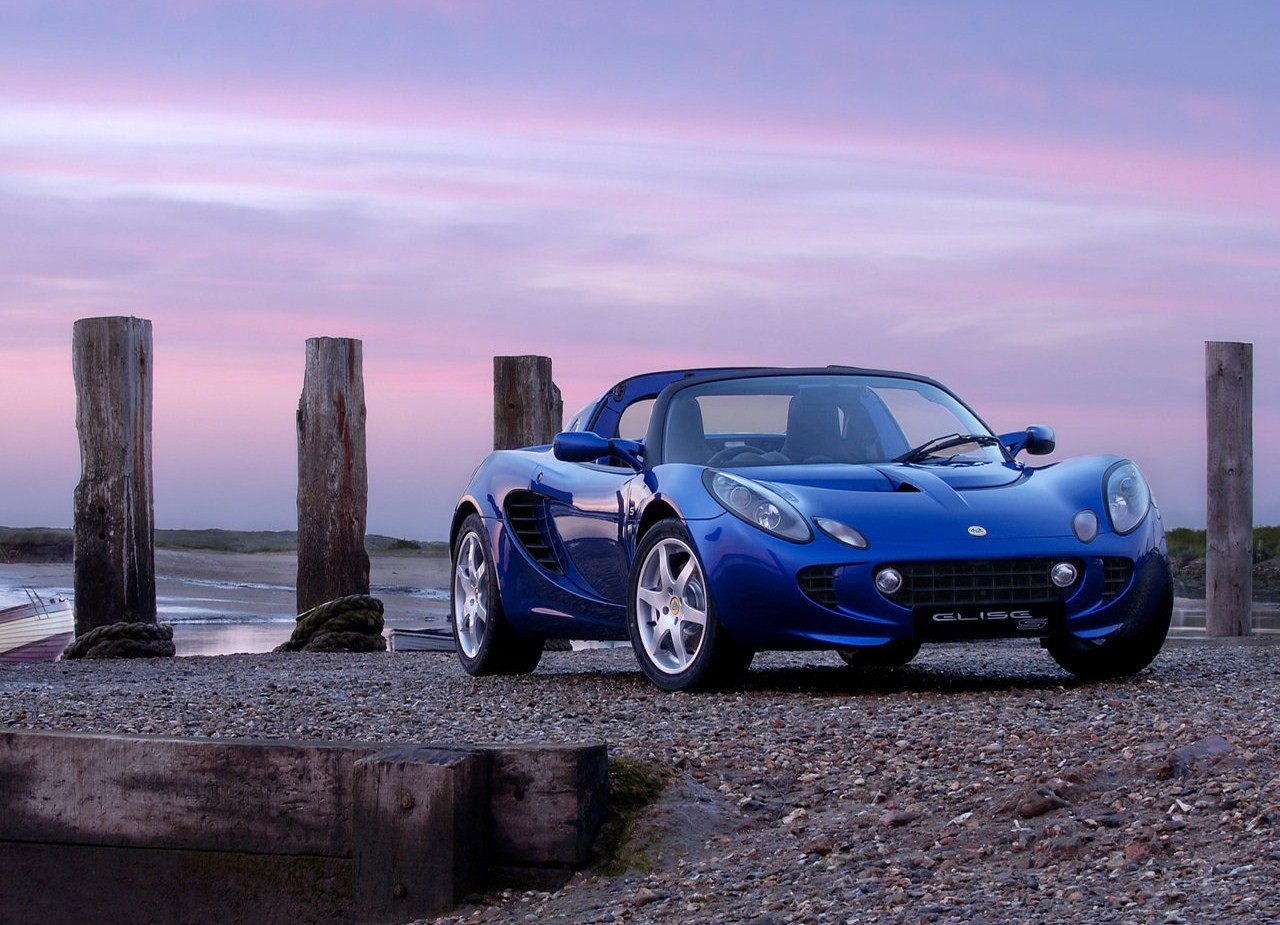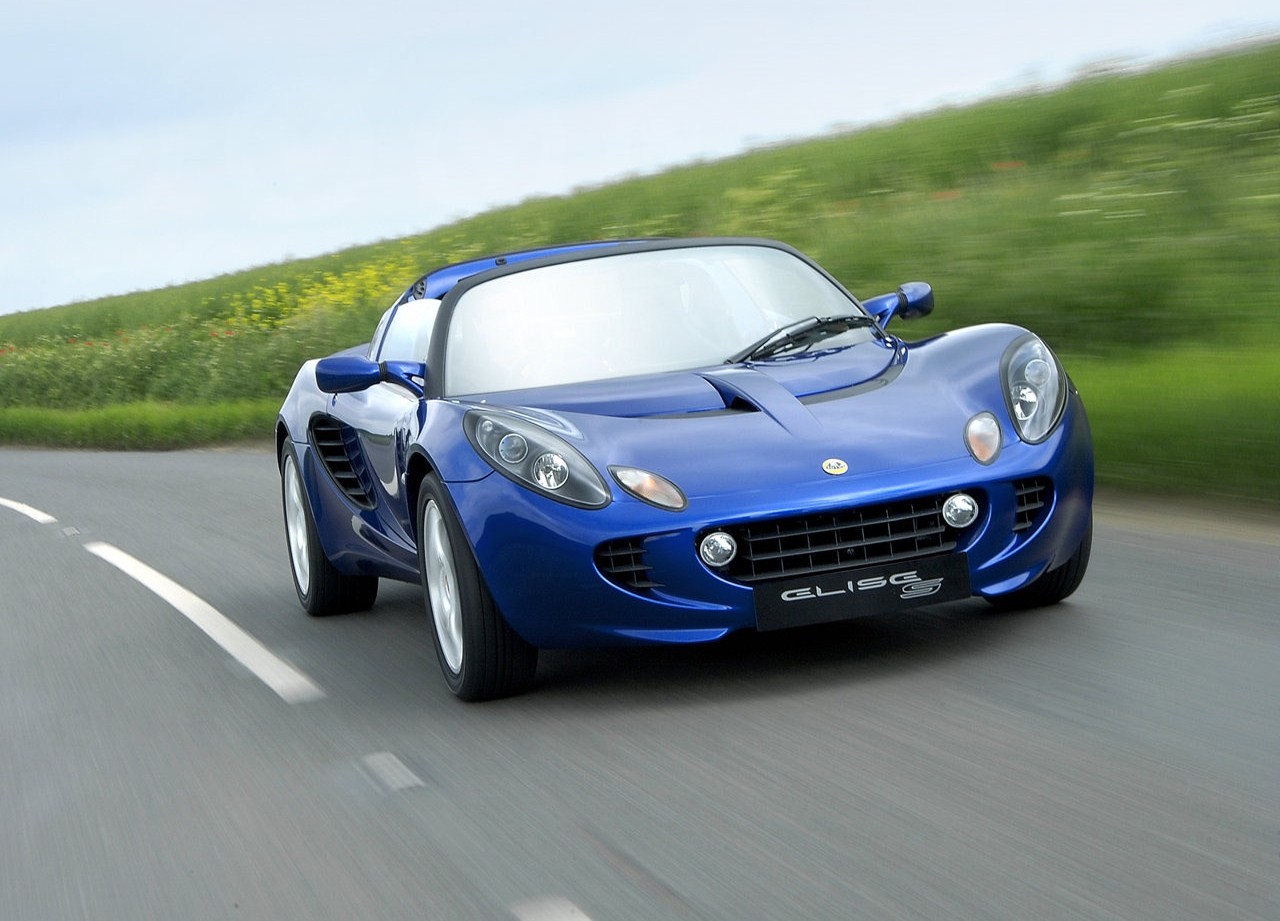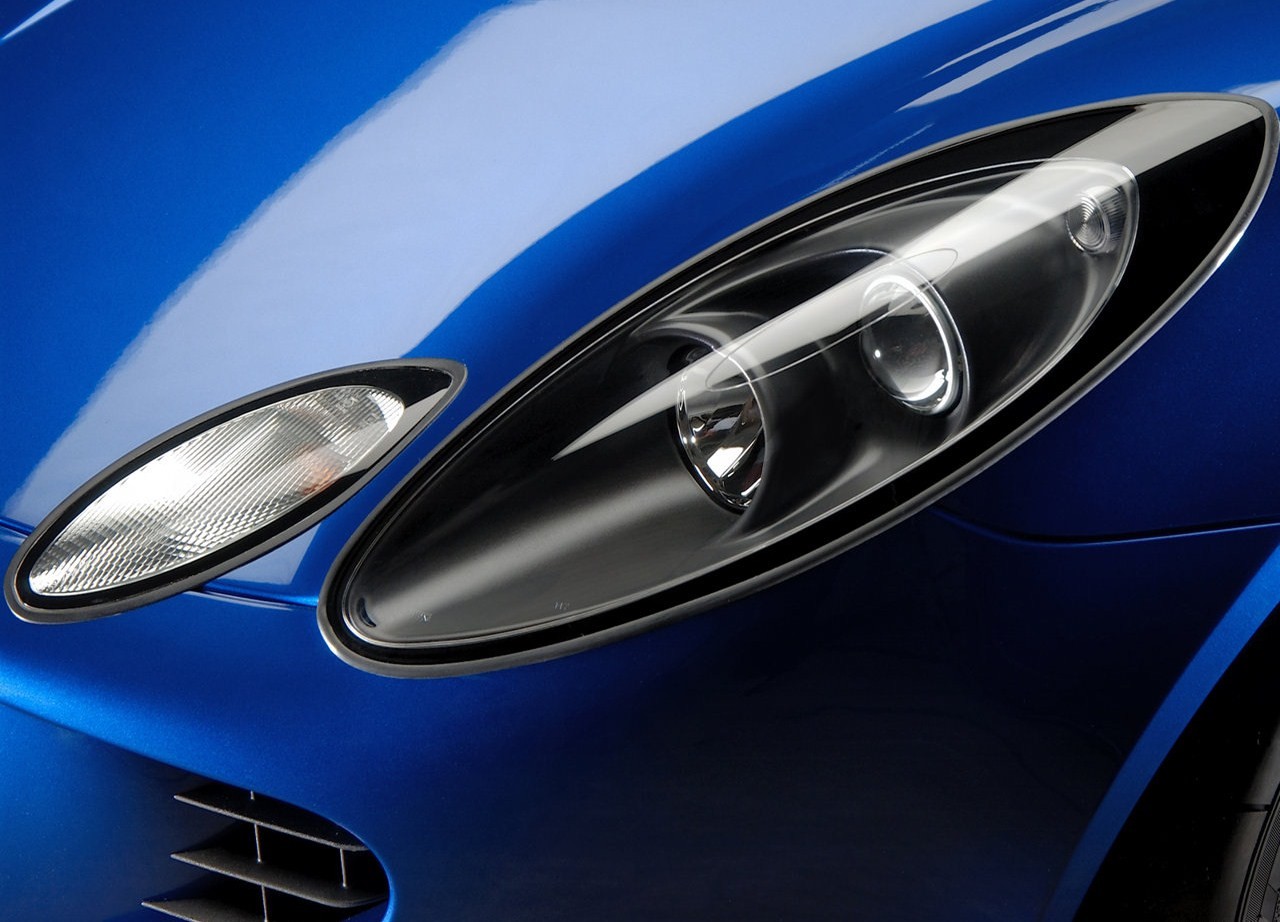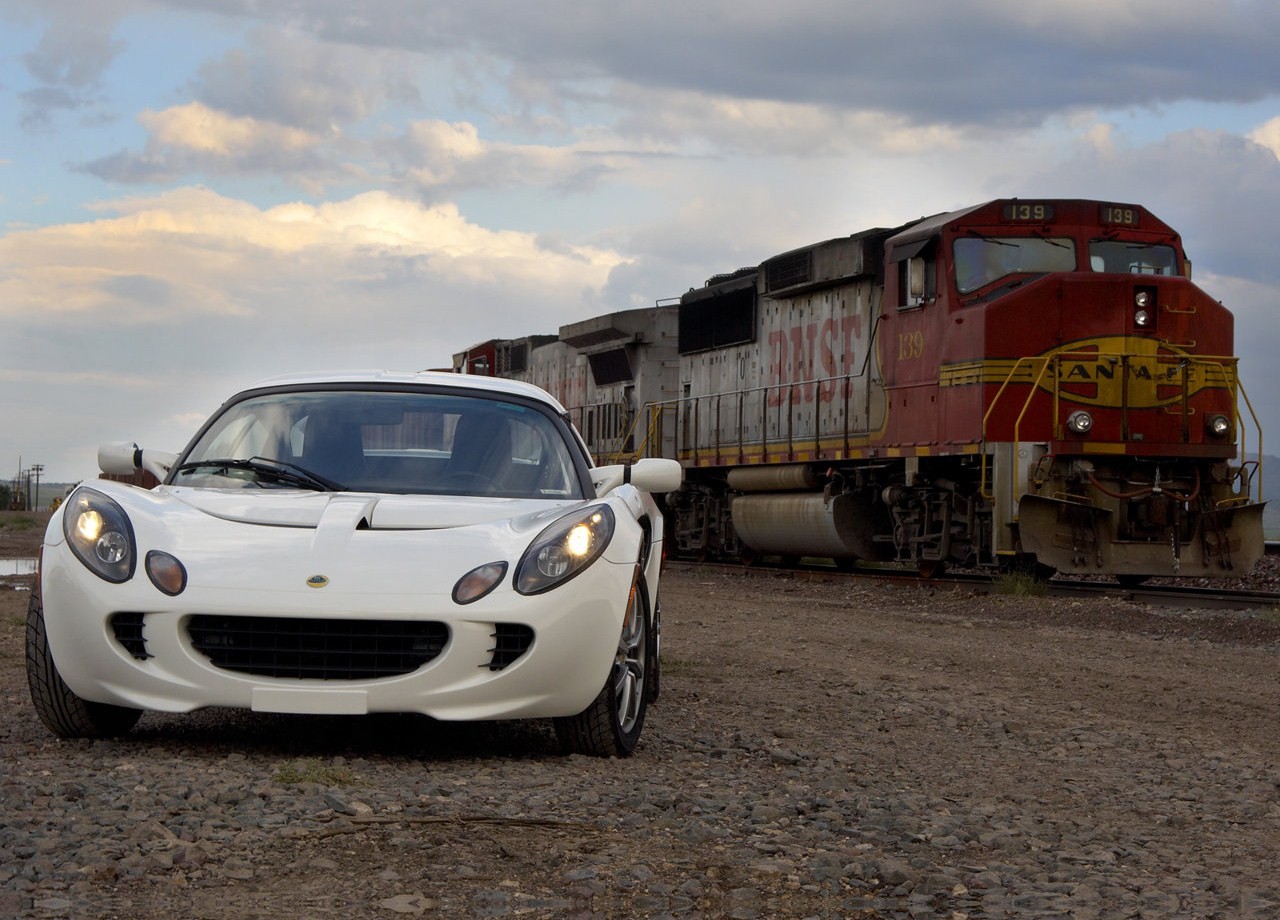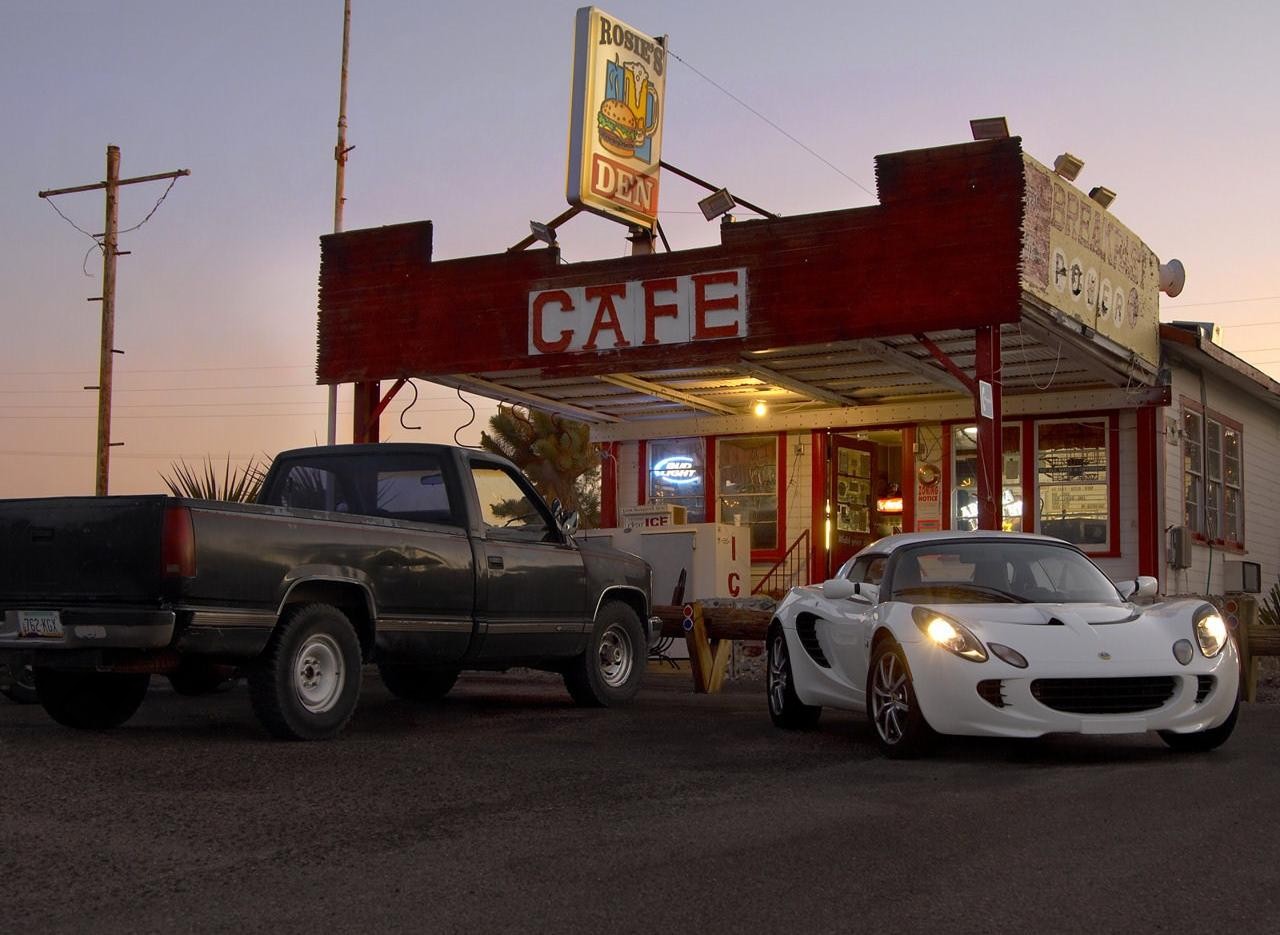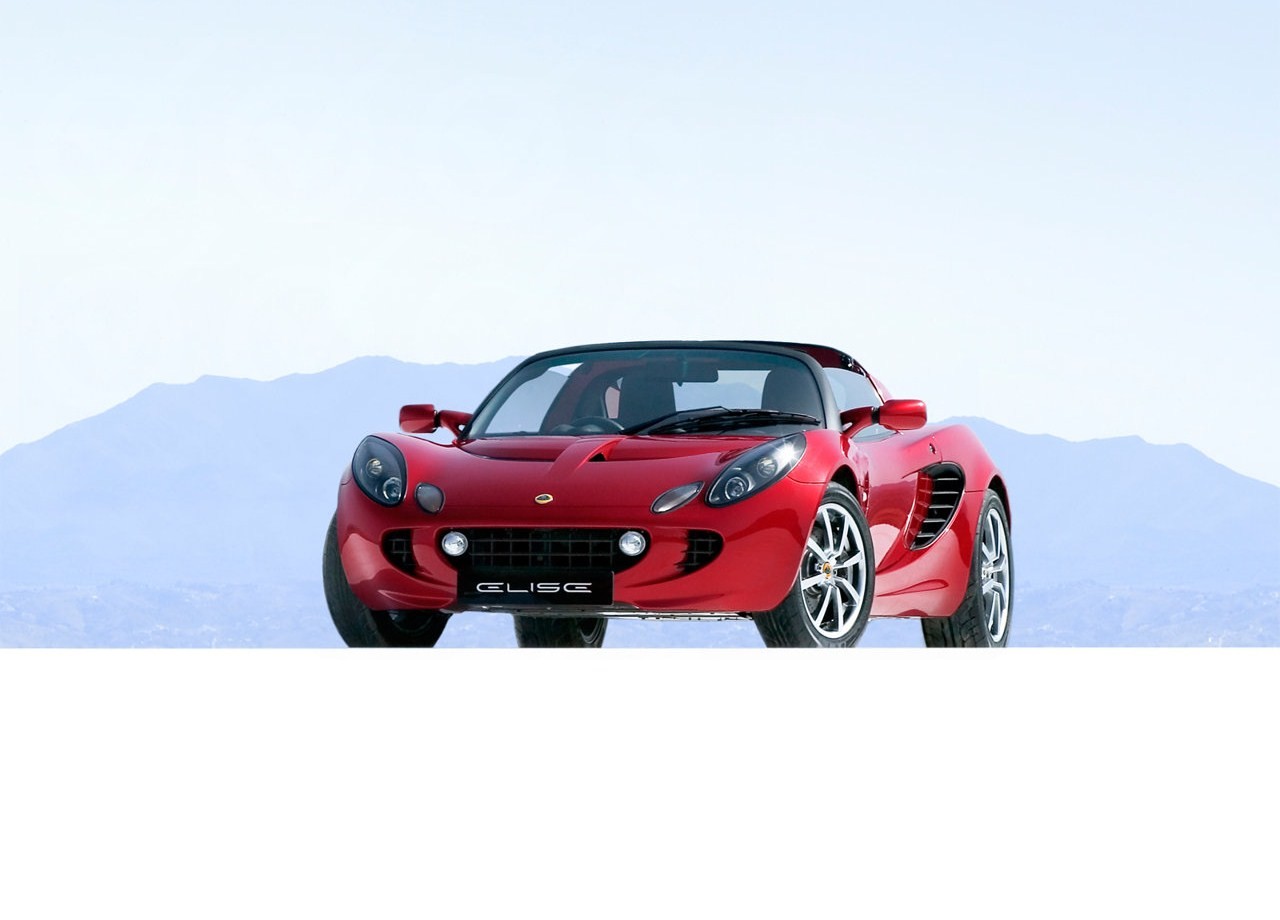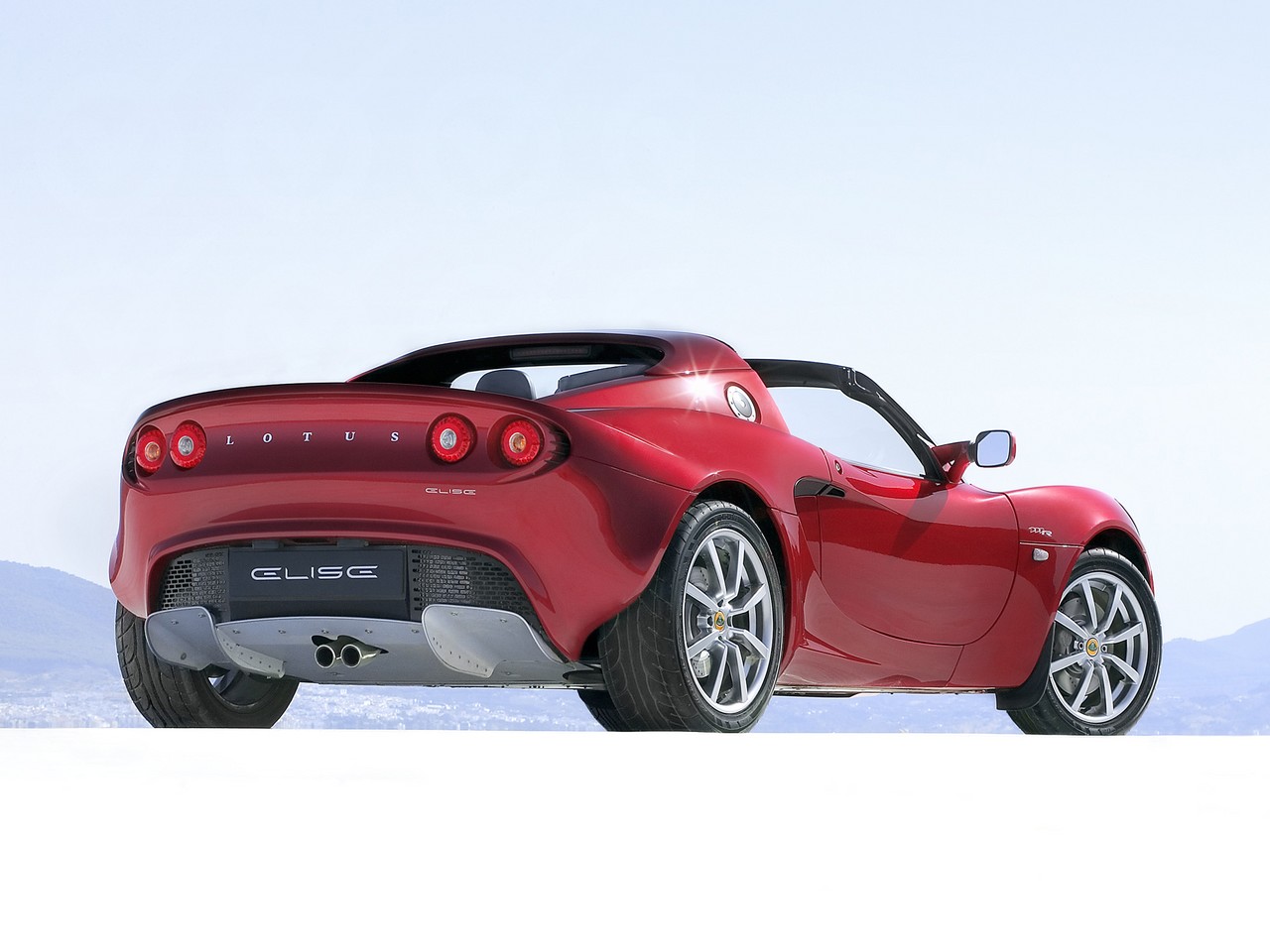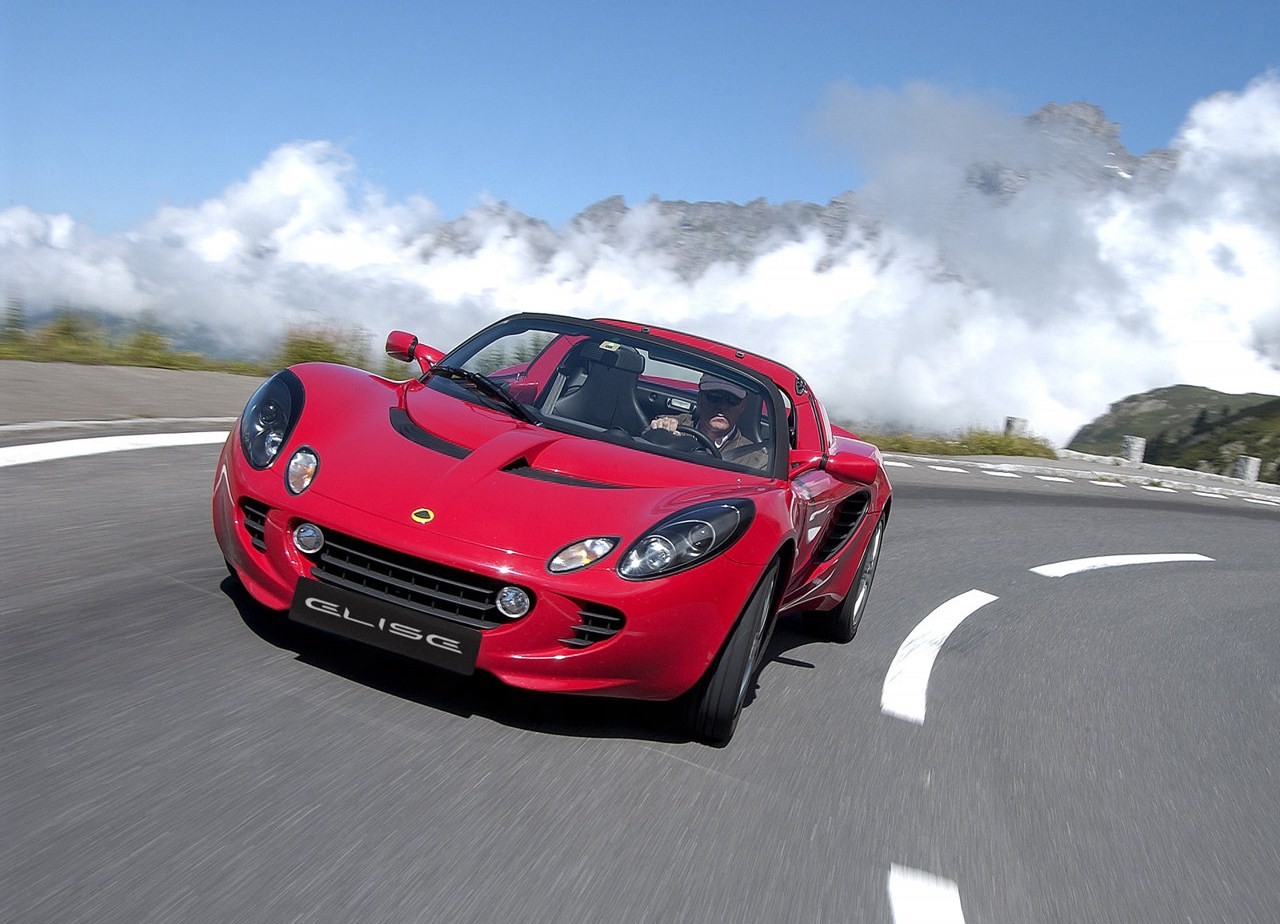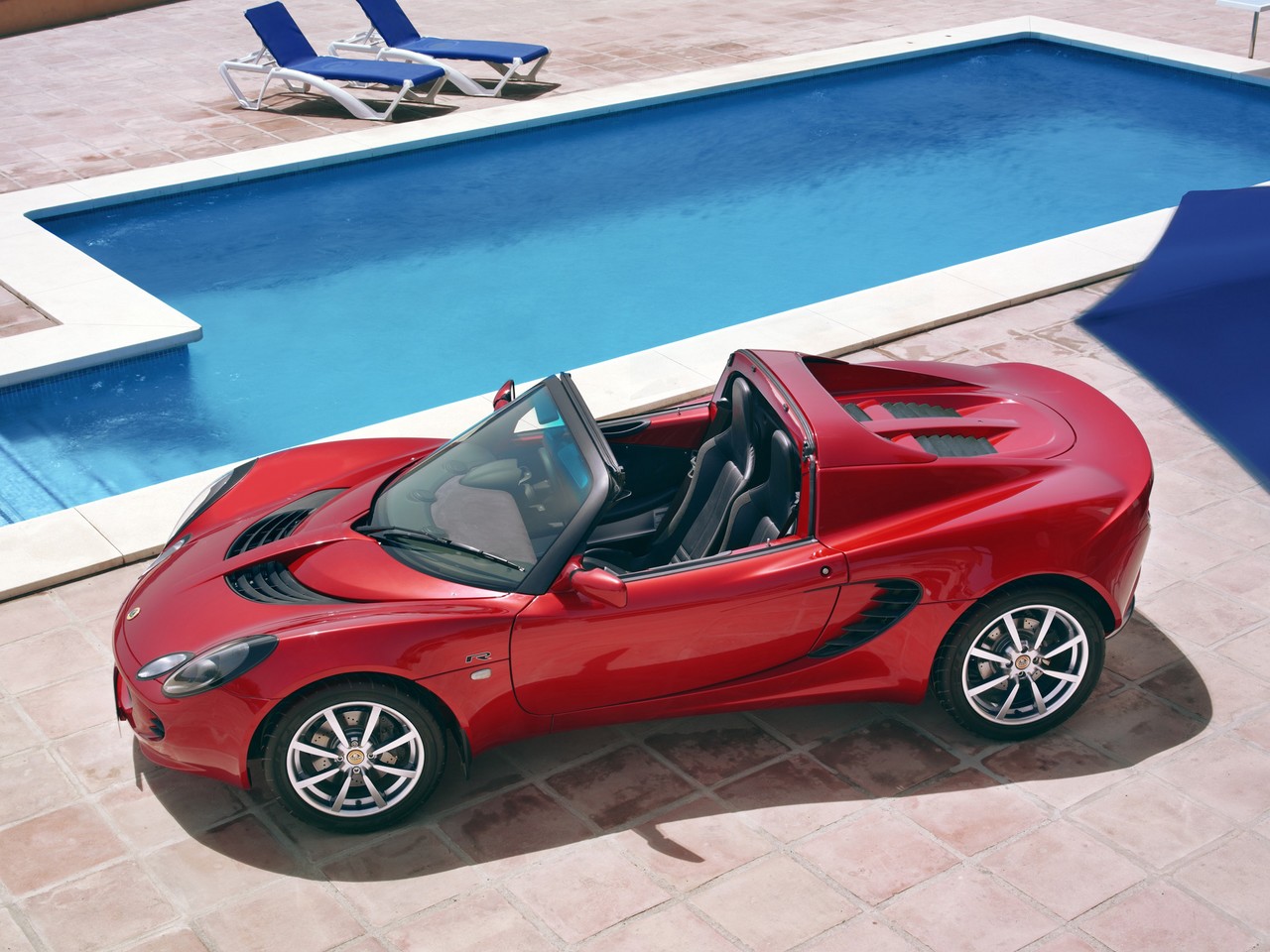
- Lightweight, agile chassis
- Excellent steering feel
- Outstanding dynamics
- Fun to drive
- Track-oriented design brings shortcomings: cramped and noisy interior
- Limited features
Review: Lotus Series II Elise (2001-06)
Overview
Released in October 2001, the Lotus Series II Elise was a mid-engined two-seat roadster with a removable roof. Manufactured in Norfolk, England, the rear-wheel drive Elise was initially powered by a Rover-sourced 1.8-litre four-cylinder petrol engine that was mated to a five-speed manual transmission. The Series II Elise range initially consisted of a single, unnamed variant, but was subsequently expanded with the introduction of 111, 111S, S, Sport 111 and 111R variants. The full range is given in the table below.
Development
Like its Series I predecessor, the Elise had an epoxy-bonded extruded aluminium chassis with a hand-finished fiberglass bodyshell. The Series II Elise, however, was compliant with newly introduced safety regulations, while the side sills were lowered and the door posts moved forward by 40 mm for easier ingress and egress. The composite body was also thinner for reduced weight and the aerodynamics were revised for additional rear downforce.
Engines
The Elise was initially powered by a 1.8-litre twin-cam Rover K-Series engine which featured double overhead camshafts, four valves per cylinder and variable valve control (VVC) which provided continuously variable timing and duration for the inlet valve openings. For the Series II Elise, Lotus also developed a unique ECU. In October 2006, however, the K-Series engines were replaced by Toyota’s 1ZZ-FE engines (see ‘Lotus Series II Elise: 2006-10’, below).
The Elise 111R was powered by Toyota’s 1.8-litre 2ZZ-GE engine . Shared with the Series II Exige , the 1.8-litre 2ZZ-GE engine had an aluminium block, an aluminium Yamaha-designed cylinder head, aluminium silicon cylinder liners, double overhead camshafts (chain-driven), forged steel connecting rods, four valves per cylinder, variable cam-phasing with variable intake and exhaust valve timing with and lift (Toyota’s ‘VVTL-i’) and a compression ratio of 11.5:1.
Dimensions and suspension
Compared to its Series I predecessor, the Series II Elise was 59 mm longer (at 3785 mm), 18 mm wider (1719 mm) and 59 mm lower (1143 mm), though wheelbase length (2300 mm) was unchanged. Kerb mass, however, increased by 31 kg to 756 kg. The Series II Elise had double wishbone suspension front and rear with specially-developed Bilstein shock absorbers.
| Variant | Years | Engine | Trans. | Peak power | Peak torque |
|---|---|---|---|---|---|
| N/A | 2001-06 | 1.8-litre petrol I4 | 5sp man. | 89 kW at 5600 rpm | 168 Nm at 3000-4500 rpm |
| S | 2003-06 | 1.8-litre petrol I4 | 5sp man. | 89 kW at 5600 rpm | 168 Nm at 3000-4500 rpm |
| 111 | 2002-03 | 1.8-litre petrol I4 | 5sp man. | 116 kW at 5500 rpm | 175 Nm at 3500 rpm |
| 111S | 2002-04 | 1.8-litre petrol I4 | 5sp man. | 116 kW at 5500 rpm | 175 Nm at 3500 rpm |
| Sport 111 | 2003-04 | 1.8-litre petrol I4 | 5sp man. | 116 kW at 5500 rpm | 175 Nm at 3500 rpm |
| 111R | 2004-06 | 1.8-litre petrol I4 | 6sp man. | 141 kW at 7800 rpm | 181 Nm at 6800 rpm |
Features
Features for the standard Elise included alloy wheels, a two speaker sound system, contoured sports seats, leather-wrapped steering wheel, rubber floor mats and immobiliser.
Elise 111 and 111S
The 111 and 111S were released in September 2002 and powered by the 1.8-litre K-Series engine – mounted transversely in the engine bay – with variable valve control. Compared to the standard Elise, the 111 and 111S had revised gear ratios, a three-element diffuser for improved aerodynamics and a stainless steel exhaust system.
With respect to features, the 111 added a CD player and air conditioning, while the 111S was further equipped with four speaker sound system, an alcantara or leather trim pack, driving lights, remote central locking, power windows, remote-activated alarm; the 111S was also fitted with cross-drilled brakes.
2003 Lotus Elise 111S Type 25
In May 2003, a limited-run 111S Type 25 edition was released. Compared to the standard 111S, the Type 25 edition was painted in Lotus Racing Green with twin metallic yellow stripes and fitted with unique black six-spoke alloy wheels. Inside, there were perforated ruby red leather seats, door panels and steering wheel centre; red laurels embroidered onto the headrest of each seat and a ‘Heritage Type 25’ ID plate. The Type 25 edition was also supplied with both a hard top and soft top roof as standard.
August 2003 update: Elise S and Elise Sport 111
In August 2003, the range expanded as S and track-oriented Sport 111 variants were introduced, although the 111 was discontinued. Features for the standard Elise were extended to include a four speaker sound system with CD player, air conditioning, carpet and a remote-activated alarm. Compared to the standard Elise, the Elise S was further equipped with a new noise insulation package, leather trim, driving lights, remote central locking, power windows.
The Sport 111 had similar features to the standard Elise, but was fitted with 16-spoke Super Tourismo wheels, Yokohama competition tyres, race-tuned suspension and cross drilled and ventilated brake discs.
Elise 111R
Released in February 2004, the 111R was powered by Toyota’s 1.8-litre 2ZZ-GE engine and had a six-speed manual Lotus transmission. The 111R was also fitted with track-tuned, servo-assisted ABS brakes as standard. The 111R had similar features to the 111S, though the 111R had a half leather interior and omitted power windows.
Review: Lotus Series II Elise (2006-10)
Overview
In October 2006, an updated Series II Elise was released with a revised range, improved safety equipment and subtle cosmetic updates. As part of the update, the 1.8-litre Rover K-Series engine was replaced by the 1.8-litre Toyota 1ZZ-FE engine, the Elise S became the entry-level variant within range and the 111R was renamed as the R variant.
Visually, the updated Series II Elise could be identified by its raised lettering for the rear ‘Lotus’ badge (previously a flat sticker) and rear ‘bumperettes’ were added next to the license plate mount.
1ZZ-FE Engine
The 1.8-litre 1ZZ-FE engine had 79 mm bore and 91.5 mm stroke, an aluminium block and cylinder head, iron cylinder liners, fracture-split forged powder metal connecting rods, double overhead camshafts (chain-driven), four valves per cylinder, variable intake valve timing and a compression ratio of 10.5:1.
May 2008: Elise SC and update
Released in April 2008, the Elise SC was powered by a supercharged 1.8-litre Toyota 2ZZ-GE engine . The Magnuson supercharger did not feature an intercooler, instead using an Eaton M45 rotor pack that was coupled with an intake manifold plenum as part of a single-piece casting.
The Elise SC also benefited from updates which were applied to the S and R variants from May 2008, such as a soft-touch dashboard, new instrumentation, LCD message panel, gearshift indicator light and a new alarm and immobiliser with a single integrated function key.
| Variant | Years | Engine | Trans. | Peak power | Peak torque |
|---|---|---|---|---|---|
| S | 2006-10 | 1.8-litre petrol I4 | 5sp man. | 100 kW at 6200 rpm | 172 Nm at 4200 rpm |
| Club Racer | 2010 | 1.8-litre petrol I4 | 5sp man. | 100 kW at 6200 rpm | 172 Nm at 4200 rpm |
| R | 2006-10 | 1.8-litre petrol I4 | 6sp man. | 141 kW at 7800 rpm | 181 Nm at 6800 rpm |
| SC | 2008-10 | 1.8-litre supercharged petrol I4 | 6sp man. | 163 kW at 8000 rpm | 212 Nm at 5000 rpm |
Safety equipment
Standard safety equipment for the 2006 Elise included dual front airbags and ABS. Furthermore, the Elise had 282 mm vented and cross-drilled cast iron brake discs front and rear with two-piston AP Racing front calipers and single-piston Brembo rear calipers.
Features
Standard features included alloy wheels, a four speaker stereo with CD player, air conditioning, contoured sports seats, driving lights, leather-wrapped steering wheel, remote central locking, power windows, carpeted floors, an alarm and immobiliser.
Elise SC
The Elise SC was similarly equipped to the S and R variants, but fitted with six-spoke 17-inch alloy wheels with Yokohama AD07 LTS 225/45 R17 tyres and a rear-mounted spoiler.
Elise Club Racer
In February 2010, limited-run Club Racer variants were released. Based on the Elise S, the Club Racer variants could be identified by their ‘CR’ badges and lightweight anthracite anodized six-spoke alloy wheels with Yokohama AD07 LTS tyres, while paint finishes consisted of Elite Yellow, Carbon Grey, Sky Blue and Old English White.
Inside, the Club Racer featured contoured sports seats which were finished with lightweight microfibre ‘comfort pads’ that provided additional bolstering, while the headrests had hand-embroidered ‘CR’ logos. Furthermore, the exterior paint colours were applied to the transmission tunnel to bisect the cockpit, there was an anthracite anodized gearknob and handbrake sleeve, and unique anodized aluminium flooring.
Related links
